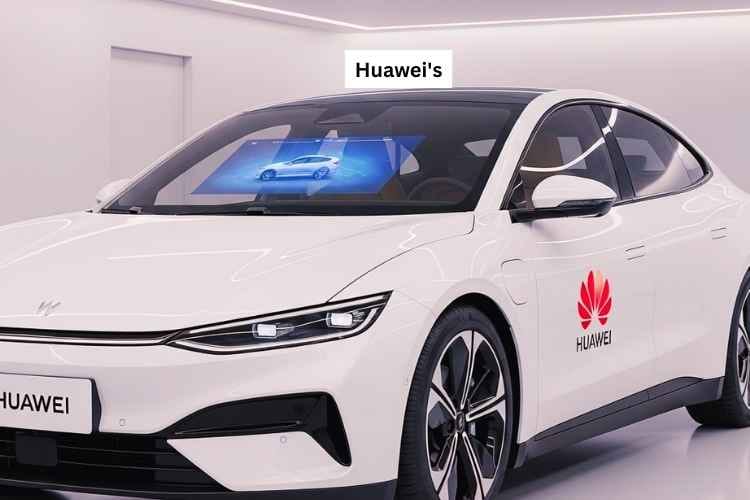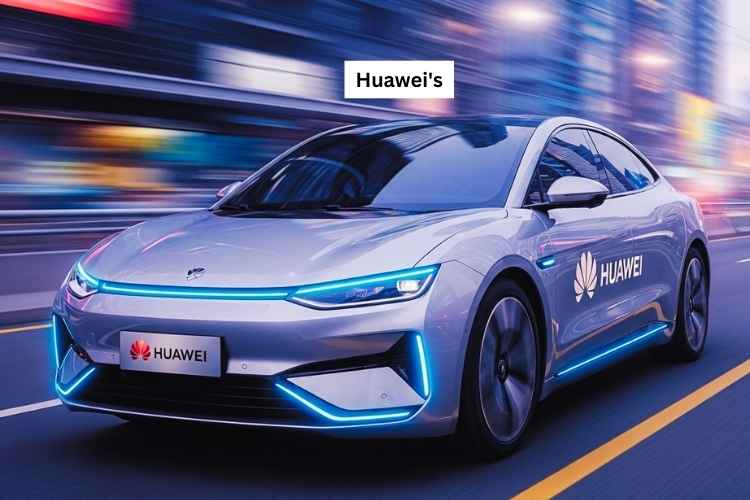Huawei’s New Patent Reveals: Huawei, best known for its smartphones and telecom equipment, is making headlines again. This time, it’s not about 5G or foldable phones — it’s about revolutionising electric vehicles. The tech giant has just filed a patent for a battery technology that claims to offer a mind-bending 3,000 kilometres (over 1,860 miles) of range on a single charge.

Table of Contents
What Does Huawei’s New EV Battery Patent Say?

Huawei’s patent — filed in China and recently made public — describes an advanced solid-state battery system combined with AI-powered energy management. Solid-state batteries aren’t new in theory, but Huawei’s approach appears to go several steps further:
| Key Feature | Details |
|---|---|
| Battery Type | Solid-state Lithium with proprietary materials |
| Energy Density | Estimated to be over 700 Wh/kg (vs 250-300 Wh/kg for typical lithium-ion) |
| Range | Claimed 3,000 km (1,860 miles) on a single charge |
| Safety Enhancements | Non-flammable materials, reduced risk of overheating |
| Charging Speed | Rumored full charge in under 30 minutes |
| AI Energy Management | Rumoured full charge in under 30 minutes |
Why 3,000 Km Range Is a Game-Changer
Let’s put this into context:
| City-to-City Distance | Approx. Distance (Km) |
|---|---|
| Los Angeles to Seattle | 1,800 km |
| Paris to Moscow | 2,800 km |
| Delhi to Mumbai and back | 2,800 km |
| New York to Miami | 2,100 km |
Huawei’s new battery could cover any of these routes, without needing a single recharge.
This directly tackles the biggest bottlenecks for EV adoption: range anxiety and charging infrastructure limitations.
What Makes Solid-State Batteries So Special?
Most EVs today use lithium-ion batteries with liquid electrolytes. These are reliable, but:
- They degrade over time
- Can overheat or catch fire
- Offer limited energy density
Solid-state batteries, by contrast, use solid electrolytes. Here’s why that matters:
| Advantage | Solid-State Battery | Traditional Lithium-ion |
|---|---|---|
| Energy Density | Higher (~700 Wh/kg) | Lower (~250-300 Wh/kg) |
| Fire Risk | Extremely low | Moderate to high |
| Lifespan | Longer | Shorter |
| Size/Weight | Smaller, lighter packs | Bulkier |
| Charging Speed | Much faster (potentially) | Moderate |
Huawei’s patent reportedly includes proprietary solid electrolyte materials that enhance ion flow without compromising stability, the key to long-range and quick charging.
Conclusion
If its 3,000 km solid-state battery makes it to market, it won’t just give EVs more range — it could redefine what electric mobility looks like.
From cross-country road trips without charging stops to AI-driven battery longevity, this breakthrough could bring EVs closer to replacing combustion engines at scale.
For now, the world waits to see if Huawei can turn this bold patent into a real-world powerhouse.
Bhakti Rawat is a Founder & Writer of InsureMyCar360.com. This site Provides You with Information Related To the Best Auto Insurance Updates & comparisons. 🔗
